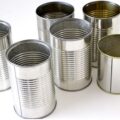The properties of a varnish are crucial to ensure the protection and proper finish of metal containers. The following are some of the most important properties of a varnish:
- Viscosity: Viscosity is a measure of a liquid’s resistance to flow. A varnish must have a suitable viscosity to facilitate its application and ensure uniform coverage on the surface of the container.
- Specific gravity: The specific gravity is the ratio between the mass of a volume of varnish and the mass of an equal volume of water. A coating with a suitable specific weight ensures a thin and uniform film on the surface of the container.
- Resin type: Resins are key components in the formulation of varnishes, as they provide the basis for the protective film. Resins can be thermoplastic or thermosetting, and their selection depends on the desired properties of the coating, such as heat resistance, flexibility and chemical resistance.
- Solvent: Solvents are used to dissolve and adjust the viscosity of resins in liquid varnishes. The selection of the right solvent is important to ensure uniform application and fast drying of the coating.
- Release or migration tests: These tests evaluate the ability of the varnish to prevent migration of chemicals from the protective film to the packaged food. A varnish must comply with food safety regulations and ensure that there is no migration of harmful substances.
- Film load or weight: The film load or weight refers to the thickness of the coating applied to the surface of the container. Adequate thickness is essential to ensure effective protection and an aesthetically pleasing finish.
- Curing control: Curing is the process by which the varnish hardens and forms a protective film on the surface of the container. Proper curing control ensures that the coating achieves its optimum properties and provides long-lasting protection.
- Adhesion: Adhesion is the ability of the coating to bond firmly to the surface of the container. Good adhesion is essential to ensure effective protection and to prevent the varnish from peeling or flaking off.
- Porosity: Porosity refers to the presence of small holes or spaces in the coating film. A low porosity coating ensures more effective protection against humidity, oxygen and other external agents.
- Autoclave resistance: Autoclave resistance is the ability of the coating to withstand high temperatures and pressures during the sterilization process. An autoclave-resistant varnish ensures that the protective film does not deteriorate or peel off during processing and storage of the package.
- Scratch resistance: Scratch resistance is the ability of the coating to resist wear and scratches. A scratch-resistant varnish ensures that the container surface retains its aesthetic appearance and protection during handling and transport.
- Sulfidation resistance: Sulfidation resistance is the ability of the coating to resist corrosion caused by exposure to sulfur compounds. A sulfuration-resistant varnish guarantees a longer shelf life and protection of the container.
In summary, a high quality varnish must offer a series of properties that guarantee the protection and proper finish of metal containers.















